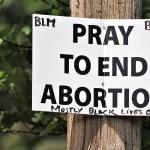UPDATE on 4/1/2015: A follow-up post is now available. I found that there were a few things that were coming up again and again in the comments section that I wanted to address, and I also found some areas where my readers helped to deepen my understanding of the issues involved. Please go read the follow-up here.
——————-
Over the weekend, I got up-to-date on the controversial new Indiana “religious freedom” law. What I discovered left me pretty much frustrated with both sides of the debate, as well as with the sensationalizing news media.
The Media and Liberals Are Not Reporting the Facts about the RFRA
The media and the liberal crowd have unfortunately really stretched the facts about what the law accomplishes and have applied their outrage inconsistently (why Indiana alone was singled out is beyond me).
The Indiana Religious Freedom Restoration Act (RFRA) is similar to a federal one signed into law by President Bill Clinton in 1993. The federal law is helpful in protecting all of our freedoms as Americans. One example: the ACLU lists ways the federal RFRA is helpful to prisoners in enabling them to practice their religion while in prison.
The federal RFRA was a helpful law, but some ambiguity remained. Wikipedia provides a useful summary of what happened next:
Originally, the federal law was intended to apply to federal, state, and local governments. In 1997, the U.S. Supreme Court in City of Boerne v. Flores held that the Religious Freedom Restoration Act only applies to the federal government but not states and other local municipalities within them. As a result, 21 states have passed their own RFRAs that apply to their individual state and local governments.
If you click on the Wikipedia link above, you will find a map showing where other such laws exist. In the same article, Wikipedia provides three key points that these laws seek to establish:
Mandates courts use the following when considering religious liberty cases:
- Strict scrutiny
- Religious liberty can only be limited for a compelling government interest
- If religious liberty is to be limited, it must be done in the least restrictive manner possible
In addition, one of the major differences between the state and federal acts, as I understand it, is that the states acts allow the religious liberty defense to be raised in court for civil suits, not just in cases in which the government itself is named. However–and this is a very essential point–the simple ability to cite a defense in court does not mean that the party who claims a religious liberty defense will win their case. An accused party can cite a “not guilty by reason of insanity” defense in a criminal court, but that does not mean they will get off scot-free. This law simply provides such respect for people’s private beliefs that if the government must violate said beliefs, the burden of proof lies on the government to show that they have a “compelling government interest” to do so and they must do so “in the least restrictive manner possible.” This provides us with a useful tool for living in a pluralistic society.
















